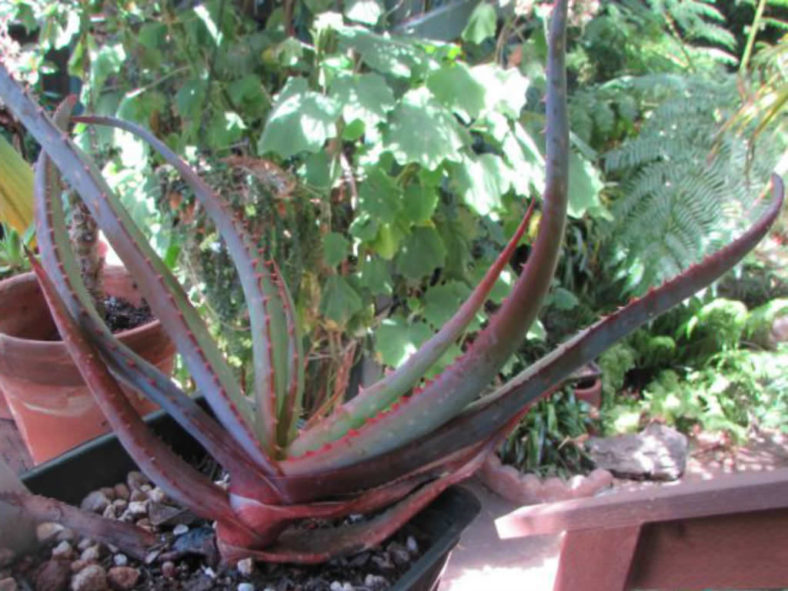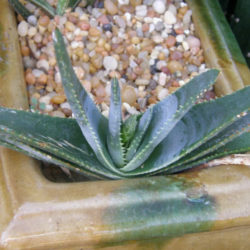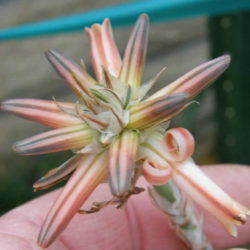Scientific Name
Aloe compressa var. paucituberculata Lavranos
Scientific Classification
Family: Asphodelaceae
Subfamily: Asphodeloideae
Genus: Aloe
Description
Aloe compressa var. paucituberculata is a small, solitary, stemless or short-stemmed succulent with fleshy, grayish-green leaves arranged in two opposite vertical rows. It has smaller leaves with fewer green or red-tipped teeth along the margins than Aloe compressa var. compressa. The leaves are narrow with a rounded tip, measuring up to 3.6 inches (9 cm) long and 1.6 inches (4 cm) wide.
The flowers are white or reddish with red to brown midveins in the upper half and about 1.3 inches (3.3 cm) long. They appear on a slender, usually unbranched, up to 28 inches (70 cm) tall stalk in fall.
Origin
Aloe compressa var. paucituberculata is native to central Madagascar. It grows on a rocky hilltop about 25 miles (40 km) north of Manua River.

Hardiness
USDA hardiness zone 9b to 11b: from 25 °F (−3.9 °C) to 50 °F (+10 °C).
How to Grow and Care
Aloe are very forgiving plants. However, as with all succulents, Aloe must never be allowed to sit in stagnant water, and the plant should be carefully monitored to watch for signs of overwatering.
Aloes are not particularly fast-growing and will only rarely need repotting. Repot plants in the spring that are tipping over their pots or have ceased growing. Use a fast-draining potting mix with one-third sand or pebbles. When repotting a larger plant, dividing the root ball carefully is possible. Some kinds of Aloe will send off off-sets that can be potted independently.
It needs intense, bright light. They can withstand full summer sun once acclimated. In the winter, provide bright light. It prefers warmer temperatures of 70 to 80 °F (21 to 27 °C) but will survive down to 40 °F (4.5 °C). Feed with a cactus fertilizer in the summer only. Suspend feeding in the winter as the plant goes dormant.
See more at How to Grow and Care for Aloe.
Links
- Back to genus Aloe
- Succupedia: Browse succulents by Scientific Name, Common Name, Genus, Family, USDA Hardiness Zone, Origin, or cacti by Genus
Photo Gallery
Click on a photo to see a larger version.


